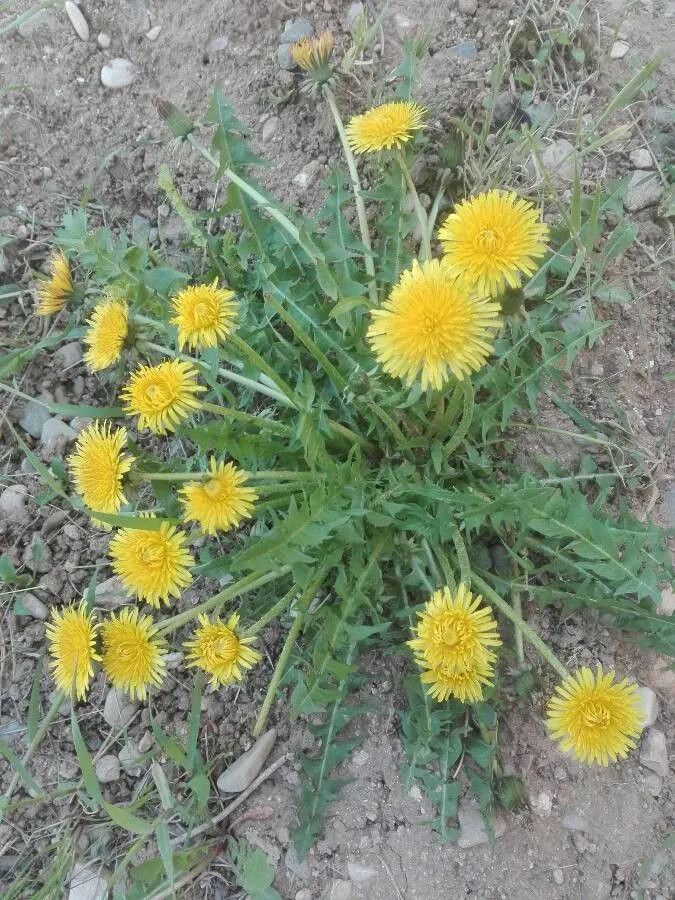
Author: Andrz. ex Besser
Bibliography: Enum. Pl. Volh.: 75 (1821)
Year: 1821
Status: accepted
Rank: species
Genus: Taraxacum
Vegetable: False
Observations: Europe to Mongolia and Caucasus
Rock dandelion, scientifically known as Taraxacum erythrospermum, is a flowering plant that belongs to the Asteraceae family. First described by the botanists Andrz. ex Besser in 1821 in the “Enumeratio Plantarum Volhynia,” this species has captivated the attention of botanists and plant enthusiasts alike due to its unique characteristics and distinctive beauty.
Originating in Europe, the rock dandelion has an extensive range, spreading from Europe all the way to Mongolia and the Caucasus region. This broad distribution is a testament to the plant’s adaptability to various climatic conditions and terrains. Unlike its common dandelion relatives, rock dandelion is particularly notable for thriving in rocky and alpine environments, which is reflected in its common name.
Botanically, the rock dandelion shares many characteristics with other members of the Taraxacum genus, including its rosette of deeply lobed leaves and a propensity to produce bright yellow flowers. These flowers typically appear in the spring and early summer, adding a burst of color to their rocky habitats. Each flower head is composed of numerous tiny florets, a typical trait of the Asteraceae family.
One of the distinguishing features of Taraxacum erythrospermum is its seed-bearing pappus, which aids in wind dispersal. The plant’s seeds are red, providing a sharp contrast to the more commonly recognized white or brown seeds of other dandelion species. This attribute not only contributes to its name—erythrospermum meaning “red seed”—but also aids in its identification among other Taraxacum species.
The rock dandelion’s adaptability and resilience make it a fascinating subject of study, particularly for those interested in alpine and rocky habitat flora. Its ability to survive and flourish in less-than-ideal soil conditions makes it a symbol of perseverance and natural beauty in rugged landscapes.
Taraxacum erythrospermum’s extensive reach from Europe to Mongolia and the Caucasus highlights its ecological importance and ability to integrate into a diverse array of landscapes. Whether admired for its bright yellow blooms or studied for its hardy nature, the rock dandelion remains a significant and intriguing member of the Asteraceae family, offering valuable insights into the adaptability and diversity of plant species.
Fra: pissenlit à feuilles lisses
Eng: rock dandelion, red-seeded dandelion
Ron: пэпэдие еритроспермэ
En: Rock dandelion, Red-seeded dandelion
Zh: 红果蒲公英
Cs: Pampeliška červenoplodá
Fi: Himmeävoikukka
Fr: Pissenlit à feuilles lisses, Pissenlit gracile
De: Rotfrüchtiger Löwenzah, Sandlöwenzahn
Ro: Пэпэдие еритроспермэ
Taken Jan 29, 2021 by Roselyne Thomas (cc-by-sa)
Taken May 20, 2022 by Asgrim Maritsson Grøneng (cc-by-sa)
Taken Apr 22, 2020 by Beytullah AYDIN (cc-by-sa)
Taken Dec 8, 2021 by Angelos (cc-by-sa)
Taken Sep 12, 2019 by parramon marta (cc-by-sa)
Taken Jan 29, 2021 by Roselyne Thomas (cc-by-sa)
Taken Apr 20, 2022 by Pietro Carnevale Lavezzoli (cc-by-sa)
Taken Apr 25, 2021 by Mike Rosoft (cc-by-sa)
Taken May 12, 2021 by Anthony Livingston (cc-by-sa)
Taken Apr 6, 2019 by Stathis Grevena (cc-by-sa)
Taken May 9, 2021 by Beytullah AYDIN (cc-by-sa)
Taken May 3, 2020 by Ece Koesesoy (cc-by-sa)
Taken May 11, 2019 by NmC (cc-by-sa)
Taken May 7, 2020 by Ueli Schmid (cc-by-sa)
Taken May 6, 2020 by elisa (cc-by-sa)
Taken Apr 16, 2016 by Tela Botanica − Genevieve BOTTI (cc-by-sa)
Taken Jul 18, 2012 by Tela Botanica − Yoan MARTIN (cc-by-sa)
Taken May 31, 2016 by Tela Botanica − Alain BIGOU (cc-by-sa)
Taken Apr 23, 2019 by Daoudi Belkacem (cc-by-sa)
Taken Mar 31, 2022 by Fabrice Rubio (cc-by-sa)
Taken Apr 29, 2021 by Güenas Yerbas (cc-by-sa)
Taken Feb 5, 2021 by Syr Asd (cc-by-sa)
Taken May 4, 2019 by Llandrich anna (cc-by-sa)
Taken May 25, 2022 by Scarlet Gomez (cc-by-sa)
Taken May 6, 2022 by Álvarez Machuca (cc-by-sa)
Taken May 15, 2010 by Photoflora – Benoit BOCK (©)
Taken Apr 15, 2013 by Photoflora – Jean-Luc TASSET (©)
Taken May 31, 1856 by Tela Botanica − Herbier PONTARLIER-MARICHAL (cc-by-sa)
Taken Mar 23, 2015 by Tela Botanica − Paul FABRE (cc-by-sa)
Family: Myrtaceae Author: (F.Muell.) K.D.Hill & L.A.S.Johnson Bibliography: Telopea 6: 402 (1995) Year: 1995 Status:…
Family: Rubiaceae Author: Pierre ex A.Froehner Bibliography: Notizbl. Bot. Gart. Berlin-Dahlem 1: 237 (1897) Year:…
Family: Sapindaceae Author: Koidz. Bibliography: J. Coll. Sci. Imp. Univ. Tokyo 32(1): 38 (1911) Year:…
Family: Asteraceae Author: A.Gray Bibliography: Pacif. Railr. Rep.: 107 (1857) Year: 1857 Status: accepted Rank:…
Family: Fabaceae Author: Medik. Bibliography: Vorles. Churpfälz. Phys.-Ökon. Ges. 2: 398 (1787) Year: 1787 Status:…
Family: Aspleniaceae Author: (Cav.) Alston Bibliography: Bull. Misc. Inform. Kew 1932: 309 (1932) Year: 1932…